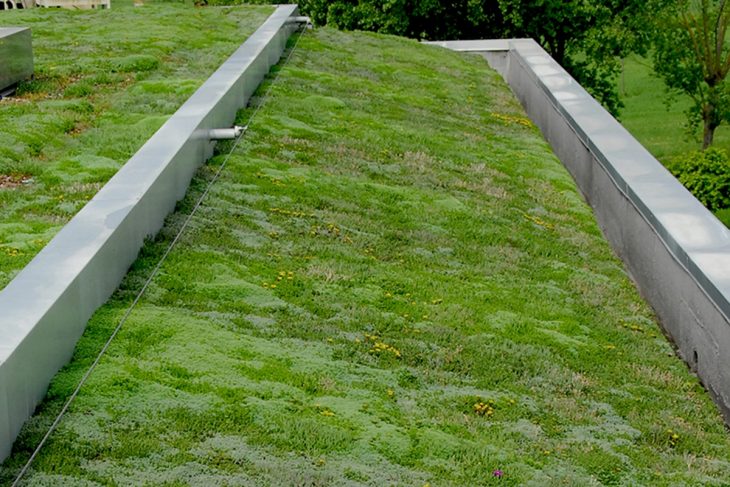
What a green roof is
It is a roofing system, both in pitch and flat, made up of recycled plastic elements a few centimeters high, with a shape reminiscent of supermarket egg containers. These are filled with natural and organic inert materials in which ground cover plants such as Sedum spp. and Mesembranthemum cooperi are planted. These plants live with very little water and almost no maintenance.
Why use a green roof?
Having a roof completely covered with low flowering vegetation is certainly aesthetically pleasing and satisfying, plus the benefits of the improvement in temperature inside the structure are undoubtedly excellent. During the summer months you can even have 20 degrees lower temperature between the top of the module (which easily reaches 60°) and the part below, which is equivalent to the insulation that can be obtained with an additional layer of more than 10 cm of polystyrene compared to the uncovered membranes. In the same way in winter you will have a smaller temperature change. The advantages in terms of energy savings are also evident!
The experimental green roof of the National Research Council Canada in Ottawa (July 2002) showed savings of 75% compared to a traditional roof (note that in this case, the data refer to a single-story building, with a substrate thickness of 15 cm); experiments conducted on the roofs of a building in Singapore, after the implementation of an extensive green system, showed reductions in the thermal gain of the interior of 60% (Wong et al. 2007); other studies have indicated that, under a green roof, indoor temperatures, compared to outdoor temperatures between 25° and 30°C, are at least 3° or 4°C lower, and Dunnett and Kingsbury (2004) note that a reduction in indoor temperature of only 0.5°C results in electricity savings for air conditioning of up to 8%. (…) according to the EPA the membrane protected by the green roof can extend its lifetime by 20 years compared to that used in traditional systems. Its lifetime is normally considered to be 2 times the lifetime of a traditional roof.
Tiziano Tozzi, Doctoral thesis in Environmental Design XXI cycle, “Hanging green technologies and urban environmental challenges. Specificity of green roofs for the Mediterranean climate” more info









